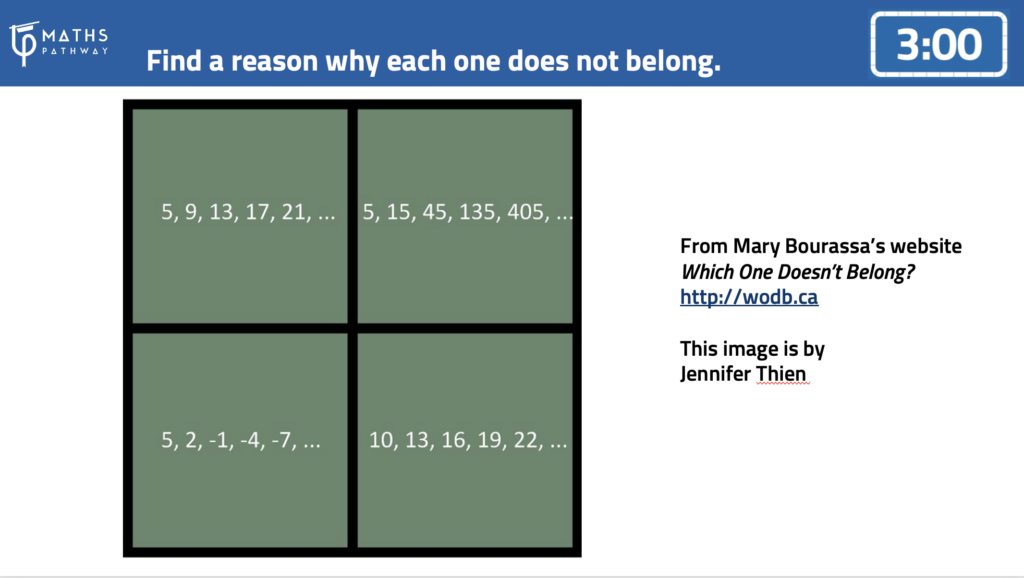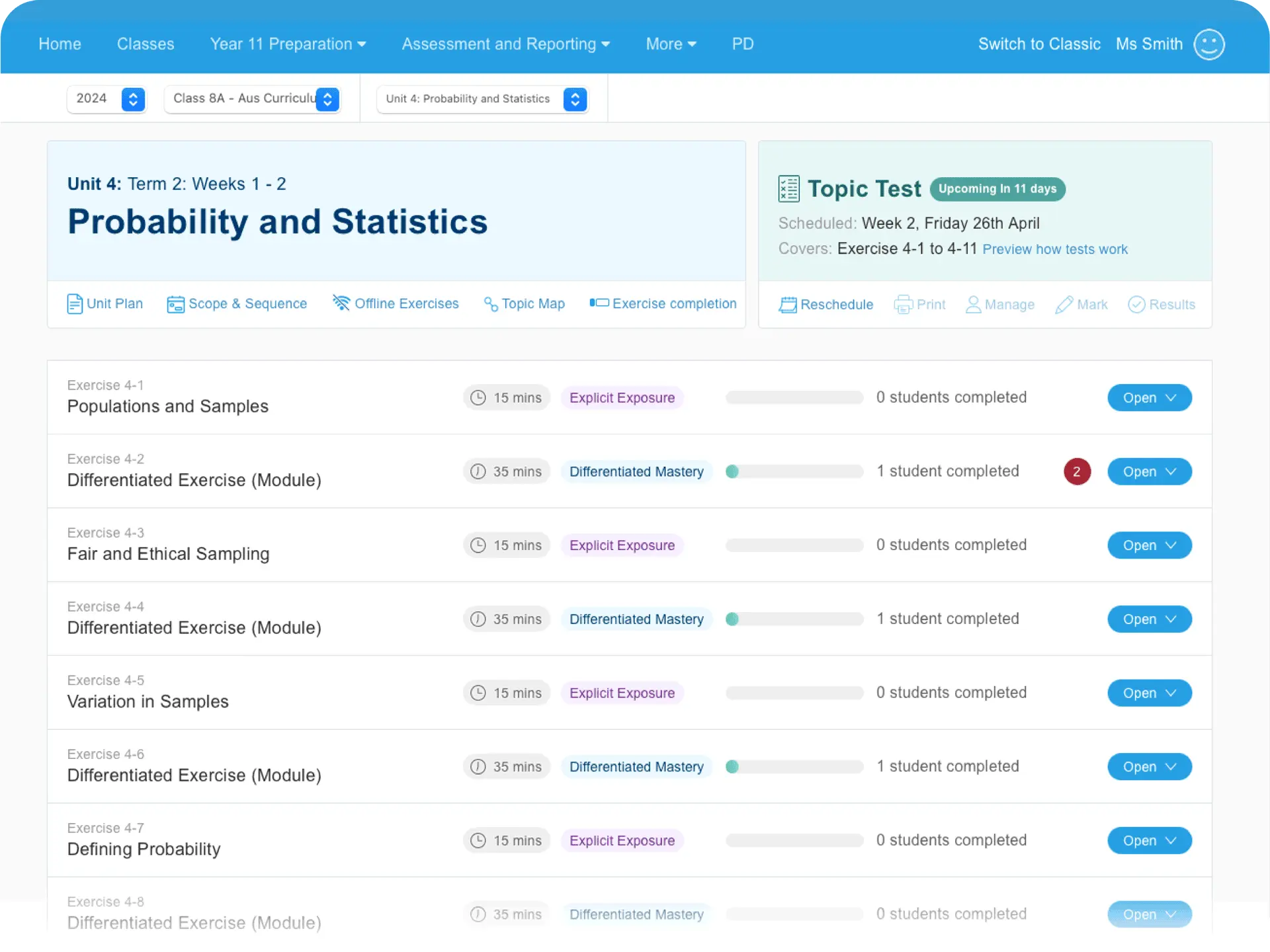
What are energisers for
In any lesson where students are working on modules, it’s good to run one or two energisers. They can be used to:
- Kick off a lesson with the whole class engaged in something together, or
- Break up a long lesson so students aren’t having to concentrate on modules for too long.
The main purpose of energisers is to help provide structure to the lesson, break up module time into reasonable chunks, and reinforce students’ emotional associations within the classroom: class cohesion, connection with the teacher, and overall feeling of safety/belonging.
Because of this, energisers don’t strictly need a “mathematical” learning intention to be effective, so some are just fun short activities. However, most energisers do contribute to mathematical learning objectives. Examples include:
- Building fluency with number
- Exploring estimation strategies
- Searching for patterns
- Using mathematical vocabulary
- Working with shape properties or number properties
- Reasoning logically
- Seeing how mathematics will be relevant to their future careers
- Broadening the sense of what mathematics is, beyond those areas covered in school
- Encountering some of the beauty and excitement in mathematics
How do teachers construct their lesson plans with energisers?
Feel free to experiment to see what works best for your class. As a starting point, here are some common patterns across other classrooms:
- Short lessons (45 minutes long) usually have one energiser, with module time broken into two chunks.
- Medium-sized lessons (60 minutes long) usually have two energisers: one at the start, and another mid-lesson. This breaks module time into two chunks.
- Long lessons (75 minutes long) usually have two energisers, but they are less likely to have one at the start. More commonly both energisers are mid-lesson, which breaks up module time into three separate chunks.
- Extra long lessons (100 minutes long – double periods) are commonly handled in two ways. Some treat them as two separate 45-minute lessons with a 10-minute break in between to get a drink or walk outside. Others treat them as a 75-minute lesson, with 15 minutes spent on something different for variety. Note that double periods are generally more suited to rich tasks than they are to modules, depending on what the timetable allows.
Whatever the length of the lesson, one very common pattern is that there is a tricky transition within the lesson. After running a mid-lesson energiser, the transition after that – to get back onto module work – can be a little tough. Some techniques that people use to help with this include: 2 minutes of silent working, or getting students to set a target for what they want to achieve over the remainder of the lesson.

